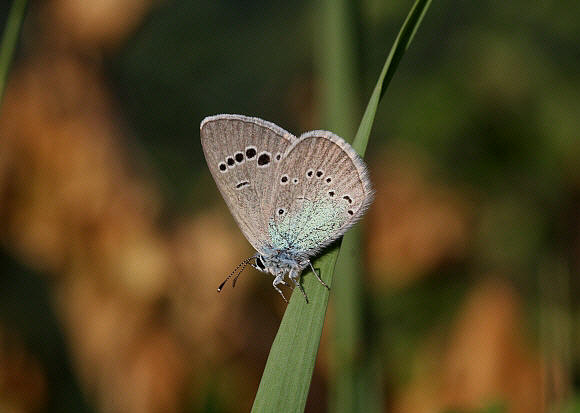 Glaucopsyche alexis, male, Noszvaj, Hungary – Peter Bruce-Jones
Glaucopsyche alexis, male, Noszvaj, Hungary – Peter Bruce-Jones
Introduction
The genus Glaucopsyche consists of 18 species variously distributed across the temperate regions of the northern hemisphere. There are 3 species in North America and 3 species in Europe – alexis, paphos and melanops. The remaining 12 species are distributed variously across temperate Asia from Kurdistan to Siberia, Kamchatka, China and Japan.
Males of most Glaucopsyche species are blue, with narrow dark brown borders and unchequered white fringes. In females the blue is greatly reduced and in some species is confined to just a few scales at the base of the wings. The undersides are silvery-grey with white-ringed back spots. The spots in the subapical area of the forewing are generally larger than those on the hindwings. Both wings have a narrow black bar at the end of the discal cell. Glaucopsyche alexis is easily told apart from other species by the metallic turquoise sheen on the basal area of the underside hindwings.
Glaucopsyche alexis is distributed across most of Europe and temperate Asia but is absent from the UK and from subarctic areas. In Africa it occurs in Morocco Tunisia and Algeria.
 Glaucopsyche alexis, female, Aggtelek, Hungary – Peter Bruce-Jones
Glaucopsyche alexis, female, Aggtelek, Hungary – Peter Bruce-Jones
Habitats
This species occurs in a wide range of flowery habitats including dry scrubby hillsides, woodland clearings, damp pastures and sub-alpine hay meadows, at elevations between sea level and about 1600m according to locality.
Lifecycle
The larvae feed on the flowers of herbaceous Fabaceae including Astragalus, Galega, Calicotome, Vicia, Coronilla, Spartium, Medicago, Melilotus, Onobrychis, Cytisus and Colutea. They are attended by several genera of ants including Lasius, Formica, Myrmica, Tapinoma and Crematogaster.
Adult behaviour
Both sexes nectar at a wide range of flowers but show a preference for Fabaceae. In late afternoon they seek areas of long grass where they roost in a head-downwards posture on grass heads.
